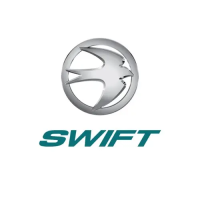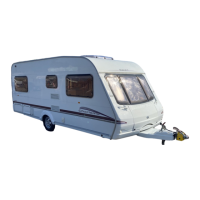Services
33
c) Check the flexible hose frequently.
d) The gas is heavier than air and therefore
sinks to the lowest point.
e) Keep bottle gas containers outside (and
protected against frost). If they must be
kept inside make sure they are well away
from heat.
Ventilation
All ventilation complies with BSEN 721 and
vents should not be obstructed in any
manner as this could lead to insufficient
fresh air. In this case the confined
atmosphere becomes depleted of oxygen
which leads to the formation of the highly
poisonous gas ‘carbon monoxide’. Carbon
Monoxide is odourless, colourless and
tasteless and will rapidly cause
unconsciousness and death with little or no
warning prior to collapse. THERE IS NO
DANGER WHEN ADEQUATE VENTILATION
IS PROVIDED.
Roof-mounted Flue installations
All flue installations should be inspected
once a year throughout their length for
corrosion. Flues should be replaced if any
sign of perforation is found. Ensure that the
replacement is of an approved type.
CONNECTION
Ensure that the gas regulator is correctly
connected to the gas cylinder in gas bottle
compartment and that the hose is tight.
Before turning on the gas supply, ensure that
all gas operated equipment in the caravan is
turned off.
All gas equipment (except barbecue) is
supplied through a central Gas Manifold
System which has individual isolation taps
for each appliance, as follows:
RED - Water Heater
WHITE - Space Heater
BLUE - Fridge
GREEN - Hob (Separate)
YELLOW - Hob & Oven (Combination)
YELLOW - Barbecue (if fitted)
Note: the external barbecue point is fed
from the main feed through an isolation tap.
See schematic layout for details.
Thermal insulation heating
Your caravan has been designed to achieve
a thermal insulation and heating level for
specific climatic conditions when tested
according to the procedure in EN1645-1.
The classifications are as follows:
GRADE 1
A caravan with an average thermal
transmittance (u) that does not exceed
1.7w/(m
2
k).
GRADE 2
A caravan with an average thermal
transmittance (u) that does not exceed
1.7w/(m
2
k) and which can achieve an
average temperature difference of at least
20k between inside and outside temper-
atures when the outside temperature is 0°C.
GRADE 3
A caravan with an average thermal
transmittance (u) that does not exceed
1.2w/(m
2
k) and which can achieve
an average temperature difference of at
least 35k between inside and outside
temperatures when the outside temperature
is -15°C.
ELECTRICITY
As with electricity in the home, care must be
exercised when handling mains electricity.
Your attention is drawn to the following
notice as laid down by the Institute of
Electrical Engineers.
INSTRUCTIONS FOR ELECTRICITY
SUPPLY
On arrival at caravan site
1. Before connecting the caravan installation
to the mains supply, check that
(a) both 12N & 12S plugs and hitch
have been disconnected from the
towing vehicle,
(b) the mains supply is suitable for your
installation and appliances, i.e.
whether it is a.c. or d.c. and whether
it is at the correct voltage and
frequency,

